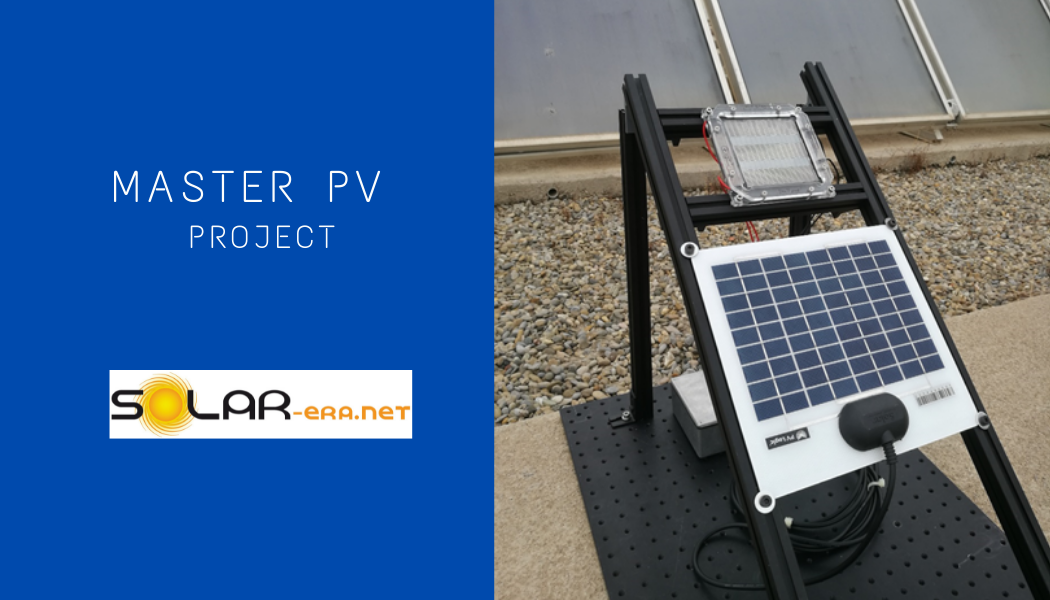The MasterPV project has addressed the development of innovative transparent back contacts in Cu(In,Ga)Se2 (CIGS) solar cells for cost efficient semi-transparent modules. CIGS semi-transparent modules can be achieved with transparency levels up to 30%-40% by selectively removal of part of the absorbers in the devices. However, the optical quality of state of the art devices is strongly compromised by the presence of a Mo back contact that is currently used in the CIGS device architecture.
The project has involved the replacement of the Mo back contact in the traditional CIGS device architecture by chemical vacuum-free based TCO (Transparent Conductive Oxide) electrodes. This will allow achieving a significant improvement in the aesthetic quality of the semi-transparent devices, with the elimination of the back mirror effect that is determined by the remaining Mo regions in the semi-transparent modules. Use of chemical based processes for the fabrication of the back contacts will also allow a reduction of the manufacturing costs, because of the replacement of the expensive vacuum-based Mo sputtering deposition processes by lower cost approaches that are based in vacuum-free chemical processes.

The main scientific challenge achieved in the project is related to the development of optimal transparent back contact configurations allowing for solar cell efficiencies comparable to the high efficiency values that have already been achieved in CIGS technologies with the standard Mo based back contacts. This has required a special effort in the optimization of TCO based contacts suitable for high efficiency devices, which has been based on the development of back contact configurations including nanometric sized functional layers deposited onto the TCO back contact. Optimal back contact configurations identified in the project correspond to the use of chalcogenide (MoSe2, MoS2) nanometric functional layers and ITO as the TCO. The activities developed in the project have allowed the successful fulfilment of the main scientific and technological Key Performance Indicators (KPIs) defined in MasterPV:
- Demonstration of optimised back contacts leading to device efficiencies ≥ 80% (for vacuum based processes) and ≥ 65% (close to the target of 70%, for chemical based processes), of that achieved with reference Mo-based devices;
- Demonstration of the scalability of processes by the development of 10×10 cm2 semi-transparent module prototypes with 10%-35% transparency in the visible region.

The main technological challenge is related to the implementation of low cost vacuum-free ink-jet printing processes for the growth of the optimal ITO based transparent back contacts configurations and to the adaptation of these processes for the fabrication of efficient semi-transparent CIGS modules. At commercial level, the improvement of the aesthetic quality of the semi-transparent modules and the decrease of their cost will contribute to the consolidation of CIGS as one of the main commercial technologies able to answer the increasing demand of cost-efficient and reliable semi-transparent products in the BIPV market. This will allow the development of semi-transparent modules with higher optical quality and combining the high efficiency and high stability characteristic of CIGS solar cells.
The MasterPV consortium is formed by the Solar Energy Materials and Systems group from IREC (coordinator), the company Francisco Albero S.A.U. (FAE, Spain) and the Martin-Luther-University Halle-Wittenberg (MLU, Germany). The project started September 2018 and finished in July 2021, involving a total budget of ~620 k€.
Acknowledgements:
This project at IREC is financed by the “Programa Acciones de Programación Conjunta Internacional” from Ministerio de Economía, Industria y Competitividad-Agencia Estatal de Investigación.

The MASTER PV is supported under the umbrella of SOLAR-ERA.NET Cofund. SOLAR-ERA.NET is supported by the European Commission within the EU Framework Programme for Research and Innovation HORIZON 2020 (Cofund ERA-NET Action, N° 691664).




